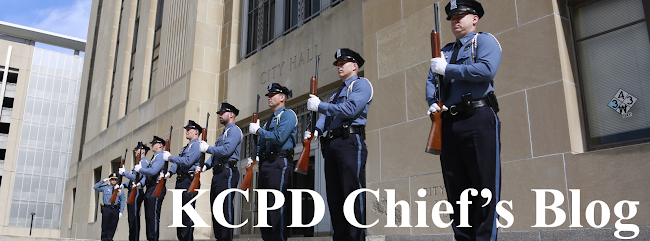When I was named Chief of Police in 2011, part of my
strategic plan included closing the Headquarters Detention Unit. We now are closer
than ever before to improving the environment for our detainees. I am very
appreciative of the efforts of those at the City and at the Jackson County
Detention Center in helping us reach this much-needed change. We hope to soon
better accommodate those who have to be detained. We also will continue to seek
opportunities to increase efficiencies as well as improve how we treat others.
Many pieces of the puzzle – everything from information
technology to inmate transport issues – have had to come together to make this consolidation happen, but we are
very close to finalizing everything and moving forward with a city-wide
detention center at 13th and Locust.
During the recession, we closed the holding facilities at
our patrol division stations because of reduced staffing and required all
arrests to be booked at Headquarters. We now are going to reopen several of those,
and detention officers will be reassigned there. Reopening these station
holding cells is more convenient for officers and allows those who have
committed lesser offenses to bond out. That frees up space at the main
detention facility.
The regional jail will be a better environment for those who
are detained. Our jail has been nearly the same since it was built in 1938. It
has received no significant upgrades, and space has been extremely tight. Because
it has not been upgraded, it never was required to be ADA (Americans with
Disabilities Act)-compliant. It has been secure and functional, but it does not
meet the needs of modern detention facilities. Joining with the City and
Jackson County on a regional jail will provide that, as well as ADA compliance.
Inmates also will receive services they don’t in our jail. All of them will be
screened by a social worker for everything from substance abuse to mental
illness problems. The social worker will be able to connect them with services
that can assist them and perhaps even remove them from a criminal lifestyle.
Inmates also will have 24/7 access to care by a licensed nurse. Because of
funding, we only can provide that for 8 to 10 hours a day at our jail.
Joining a regional detention center also will eliminate
redundancies in the booking and arraignment processes. Our jail never was
intended to house inmates for more than 24 hours, so when inmates don’t make
bond, they currently must be transferred to the City/County detention center.
This causes them to have to be rebooked all over again at that facility.
I appreciate all the hard work on the part of our staff and
that of the City’s and County’s to make this regional detention facility a
reality. I also cannot say enough to commend our current Detention Unit staff.
They often are short-staffed and do the best they can with an outdated
facility. They spend their days dealing with the most belligerent and violent
people in Kansas City, and they do it with respect and professionalism. They are
about to undergo big changes, and I appreciate their willingness and openness.
Send comments to kcpdchiefblog@kcpd.org

